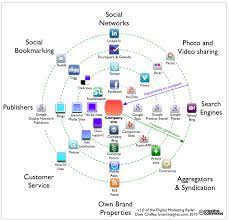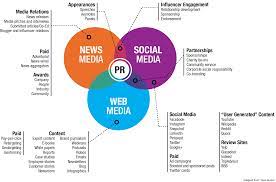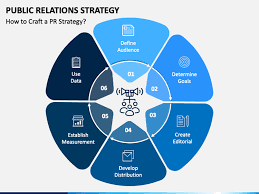The Power of Good PR: Building Trust and Success in the UK
Title: The Power of Good PR: Building Trust and Success
Introduction:
In today’s competitive business landscape, establishing a positive reputation and maintaining a strong brand presence are crucial for success. One of the most effective ways to achieve this is through good Public Relations (PR). Good PR goes beyond traditional marketing tactics; it focuses on building relationships, fostering trust, and enhancing the overall image of a company or individual. In this article, we will explore the importance of good PR and how it can contribute to long-term success.
Enhancing Credibility:
Good PR plays a significant role in enhancing credibility. By effectively communicating key messages and highlighting strengths, PR professionals can shape public perception in a positive way. Through strategic media outreach, thought leadership initiatives, and well-crafted messaging, companies can position themselves as industry experts and gain the trust of their target audience. Credibility not only attracts customers but also helps establish fruitful partnerships with other businesses.
Managing Reputation:
Reputation is everything in today’s interconnected world. A single negative incident or miscommunication can have far-reaching consequences for a company’s image. Good PR acts as a safeguard by proactively managing reputation issues and addressing them promptly. Skilled PR professionals monitor online conversations, engage with stakeholders, and employ crisis communication strategies when necessary to protect the brand’s integrity.
Building Relationships:
At its core, good PR is about building relationships with various stakeholders – customers, employees, investors, media outlets, and the community at large. By nurturing these relationships through regular communication channels such as press releases, newsletters, social media engagement, and events participation, companies can foster loyalty and create brand advocates who will support them during both good times and challenging periods.
Driving Business Growth:
Good PR has a direct impact on business growth. When customers perceive a company positively due to effective PR efforts, they are more likely to choose its products or services over competitors’. Positive media coverage generated through strategic public relations can also result in increased visibility, attracting new customers and driving revenue growth. Additionally, strong relationships with the media can lead to valuable opportunities for exposure, further boosting a company’s reputation and market presence.
Adapting to Digital Age:
In the digital age, PR has evolved beyond traditional media outlets. Social media platforms, online influencers, and digital publications now play a crucial role in shaping public opinion. Good PR professionals understand the importance of adapting to these changes and utilize various online channels to reach wider audiences. They leverage social media campaigns, influencer collaborations, and content marketing strategies to engage with target demographics effectively.
Conclusion:
Good PR is an invaluable asset for any business or individual seeking long-term success. Through effective communication strategies, reputation management techniques, relationship building efforts, and adaptation to the digital landscape, good PR helps establish credibility, foster trust, drive growth, and protect brands from potential reputational risks. By investing in good PR practices, companies can build a solid foundation for success in today’s competitive business world.
8 Benefits of Effective PR: Boosting Brand Visibility, Strengthening Customer Relationships, Fostering Trust and Loyalty, Driving Website Traffic and Sales Leads, Enhancing Reputation Management, Expanding Market Reach, Garnering Positive Media Coverage, and Elev
- Increased brand visibility and recognition
- Improved customer relationships
- Increased trust and loyalty from customers
- Increased website traffic and sales leads
- Improved reputation management
- Ability to reach new markets and demographics
- Positive media coverage for your business or organisation
- Enhanced credibility in the eyes of potential investors
Drawbacks of Good PR: The Cost, Time, and Strategic Demands
- It can be expensive – Good PR campaigns require a significant financial investment and may not always provide the returns you expect.
- It can take time to show results – Depending on the nature of your PR campaign, it may take weeks or even months before you start to see any results from your efforts.
- It requires a lot of planning and strategy – Good PR campaigns don’t just happen; they need to be well-thought out and carefully planned in order to achieve success.
Increased brand visibility and recognition
In today’s crowded marketplace, where competition is fierce, standing out and gaining visibility is crucial for any business. This is where good Public Relations (PR) shines, particularly in terms of increasing brand visibility and recognition. By effectively leveraging PR strategies, companies can elevate their presence in the public eye and establish themselves as industry leaders.
One of the primary benefits of good PR is its ability to generate media coverage. Skilled PR professionals know how to craft compelling stories and pitch them to relevant journalists and media outlets. As a result, businesses gain valuable exposure through news articles, interviews, features, and other forms of media coverage. This increased visibility not only reaches a wider audience but also lends credibility to the brand.
Beyond traditional media channels, good PR also taps into the power of digital platforms. In today’s digital age, social media plays a significant role in shaping public opinion and influencing consumer behaviour. PR professionals understand this landscape well and utilize various social media platforms to amplify brand messaging. Engaging content, strategic influencer partnerships, and targeted campaigns help increase brand visibility among online audiences.
Increased brand visibility goes hand in hand with improved brand recognition. When a company consistently appears in the media or maintains an active presence on social media channels, it becomes more recognizable to consumers. This familiarity builds trust and credibility over time. Consumers are more likely to choose brands they recognize over unfamiliar ones when making purchasing decisions.
Moreover, good PR efforts contribute to building a positive reputation for the brand. Through thought leadership initiatives such as expert opinions or guest articles in industry publications, businesses can position themselves as knowledgeable authorities within their respective fields. This recognition further enhances the brand’s reputation and increases its visibility among key stakeholders.
The advantages of increased brand visibility and recognition extend beyond immediate consumer awareness; they also attract potential business opportunities. When a company has a strong presence in the market and is widely recognized for its expertise or unique offerings, it becomes more appealing to potential partners, investors, and collaborators. These opportunities can open doors to collaborations, sponsorships, and strategic alliances that further propel the brand’s growth.
In conclusion, good PR plays a pivotal role in increasing brand visibility and recognition. By securing media coverage, leveraging social media platforms, establishing thought leadership, and building a positive reputation, businesses can stand out in a crowded marketplace. The resulting increased visibility not only attracts consumers but also opens doors to valuable business opportunities. Investing in good PR practices is an invaluable asset for any company looking to establish a strong brand presence and achieve long-term success.
Improved customer relationships
Title: Strengthening Bonds: The Pro of Good PR – Improved Customer Relationships
Introduction:
In an increasingly competitive business landscape, building and maintaining strong relationships with customers is vital for long-term success. One of the key benefits of good Public Relations (PR) is its ability to enhance customer relationships. In this article, we will explore how good PR practices can contribute to improved customer relationships and why it matters.
Building Trust:
Good PR focuses on establishing trust between a company and its customers. By effectively communicating key messages, addressing concerns transparently, and providing accurate information, PR professionals help build credibility and foster a sense of trustworthiness. Customers are more likely to engage with a brand that they perceive as reliable and transparent, leading to stronger relationships built on trust.
Open Communication Channels:
Successful PR campaigns create opportunities for open communication between companies and their customers. Through various channels such as social media platforms, newsletters, blogs, or direct engagement at events, companies can actively listen to their customers’ feedback, suggestions, and concerns. This two-way communication not only makes customers feel valued but also enables businesses to better understand their customers’ needs and preferences.
Responsive Customer Service:
Good PR practices go hand in hand with responsive customer service. When companies actively engage in public relations efforts, they are more likely to be aware of customer inquiries or issues promptly. By addressing these concerns in a timely manner and providing satisfactory resolutions, businesses demonstrate their commitment to customer satisfaction. This responsiveness helps nurture positive relationships by showing that the company values its customers’ experiences.
Creating Positive Experiences:
Effective PR strategies aim to create positive experiences for customers at every touchpoint. From well-crafted brand messaging to personalized interactions through social media or events, good PR ensures that customers feel valued and appreciated throughout their journey with the brand. These positive experiences contribute to building emotional connections with the brand and foster long-term loyalty.
Advocacy and Word-of-Mouth Promotion:
When customers have positive experiences and strong relationships with a brand, they are more likely to become brand advocates. They willingly share their positive experiences with others, whether through word-of-mouth recommendations or on social media platforms. Good PR practices help cultivate these brand advocates by consistently delivering exceptional customer experiences and engaging customers in meaningful ways. This organic advocacy can significantly amplify a brand’s reputation and attract new customers.
Conclusion:
Good PR is instrumental in improving customer relationships by building trust, facilitating open communication, providing responsive customer service, creating positive experiences, and fostering brand advocacy. By investing in effective PR strategies, businesses can enhance their reputation and establish long-lasting connections with their customers. Improved customer relationships not only lead to increased loyalty but also contribute to the overall growth and success of a business in today’s competitive marketplace.
Increased trust and loyalty from customers
Title: Building Trust and Loyalty: The Power of Good PR
In today’s fast-paced and competitive business world, establishing trust and loyalty among customers is vital for long-term success. One of the key benefits of good Public Relations (PR) is its ability to cultivate trust and foster loyalty. In this article, we will explore how good PR can strengthen the bond between businesses and their customers, leading to increased trust and loyalty.
Trust is the foundation upon which successful relationships are built. Good PR helps businesses establish trust by effectively communicating their values, expertise, and commitment to customer satisfaction. Through strategic messaging, transparent communication, and consistent brand representation, PR professionals can create a positive perception of a company or individual in the eyes of their target audience.
When customers perceive a business as trustworthy, they are more likely to develop loyalty towards it. Good PR campaigns build credibility by showcasing success stories, highlighting customer testimonials, and demonstrating industry expertise. By consistently delivering on promises and maintaining open lines of communication with customers, businesses can foster a sense of reliability that encourages repeat purchases and long-term relationships.
Moreover, good PR allows companies to engage with their customers on a deeper level. Through various channels such as social media platforms, newsletters, blogs, or events participation, businesses can establish direct communication with their audience. This two-way interaction enables them to listen to customer feedback, address concerns promptly, and demonstrate genuine care for their needs. By actively engaging with customers in this way, businesses show that they value their opinions and are committed to providing exceptional experiences.
Positive media coverage generated through effective PR efforts also contributes significantly to building trust and loyalty among customers. When a company receives favourable mentions in reputable publications or is featured as an industry expert in the media, it enhances its credibility in the eyes of potential customers. Such endorsements from trusted sources instil confidence in consumers’ minds about the company’s products or services.
Furthermore, good PR helps companies navigate potential crises or negative situations. By proactively managing reputation issues and communicating transparently during challenging times, businesses can demonstrate their commitment to honesty and integrity. This level of transparency builds trust among customers, as they appreciate businesses that take responsibility for their actions and strive to rectify any mistakes.
In conclusion, good PR is a powerful tool for building trust and loyalty among customers. By effectively communicating a company’s values, showcasing expertise, engaging with customers directly, and managing reputation proactively, PR professionals play a crucial role in establishing credibility and fostering long-term relationships. Trust and loyalty are invaluable assets in today’s business landscape, as they not only drive customer retention but also attract new customers through positive word-of-mouth recommendations. Investing in good PR practices is an investment in the future success of any business.
Increased website traffic and sales leads
Title: Driving Success: Good PR’s Impact on Increased Website Traffic and Sales Leads
Introduction:
In today’s digital age, a strong online presence is essential for businesses to thrive. One of the significant benefits of good Public Relations (PR) is its ability to drive increased website traffic and generate valuable sales leads. In this article, we will explore how effective PR strategies can boost online visibility, attract more visitors to your website, and ultimately lead to higher conversion rates and business growth.
Creating Buzz and Awareness:
Good PR generates buzz around your brand or company by strategically placing your messages in front of the right audience. Through media outreach, press releases, and thought leadership initiatives, PR professionals can secure valuable media coverage that introduces your business to a wider audience. This exposure raises awareness about your products or services, piquing the interest of potential customers who may then visit your website to learn more.
Building Trust and Credibility:
When it comes to making purchasing decisions, consumers often rely on trust and credibility. Good PR plays a vital role in establishing these qualities for your brand. Positive media coverage, endorsements from influencers or industry experts, and well-crafted messaging all contribute to building trust with your target audience. As consumers trust your brand more, they are more likely to visit your website with confidence in what you offer.
Driving Organic Traffic:
An effective PR strategy can significantly impact organic traffic to your website. When media outlets publish articles or news features about your business, they often include links back to your website. These backlinks not only boost search engine rankings but also act as referral sources for potential customers who click through to learn more about you. The higher the quality of these backlinks from reputable sources, the better it is for driving organic traffic.
Expanding Online Visibility:
Good PR efforts can help expand your online visibility across various platforms such as social media networks and industry-specific websites. Engaging with influencers or partnering with relevant online publications can expose your brand to their followers and readership. This increased visibility leads to more website visits from individuals who have a genuine interest in your products or services, increasing the chances of converting them into valuable sales leads.
Generating Sales Leads:
Ultimately, the goal of increased website traffic is to generate sales leads. Good PR not only attracts visitors to your website but also nurtures them through strategic messaging and engaging content. By providing valuable information, addressing pain points, and showcasing your expertise, PR efforts can convert website visitors into potential customers who are more likely to make a purchase or engage with your business further.
Conclusion:
Good PR is a powerful tool that can significantly impact your online presence and business growth. By creating buzz, building trust and credibility, driving organic traffic, expanding online visibility, and generating sales leads, effective PR strategies contribute to increased website traffic and ultimately boost revenue. Investing in good PR practices allows you to reach a wider audience, establish meaningful connections with potential customers, and position your brand for long-term success in the digital landscape.
Improved reputation management
Title: The Pro of Good PR: Enhanced Reputation Management
Introduction:
In the fast-paced and interconnected world we live in, reputation is everything. A positive reputation can open doors to new opportunities, attract customers, and build trust. On the other hand, a damaged reputation can have severe consequences for individuals and businesses alike. This is where good Public Relations (PR) plays a vital role. One of the significant advantages of good PR is its ability to improve reputation management effectively. In this article, we will explore how good PR can help shape and protect an organization’s reputation.
Proactive Reputation Monitoring:
Good PR professionals understand the importance of proactive reputation monitoring. They keep a close eye on online conversations, social media platforms, review sites, and other relevant channels to identify potential issues or negative sentiments towards a brand. By staying vigilant and addressing concerns promptly, they can mitigate potential damage before it escalates.
Crisis Communication Strategies:
No business is immune to crisis situations. However, with good PR practices in place, companies are better equipped to handle such scenarios effectively. Skilled PR professionals develop robust crisis communication strategies that outline clear steps to be taken during challenging times. These strategies include timely responses, open communication with stakeholders, and transparency in addressing concerns. By implementing these plans swiftly and efficiently, organizations can minimize reputational damage caused by crises.
Building Trust through Authenticity:
In today’s age of transparency and authenticity, customers value brands that are genuine and honest in their communications. Good PR emphasizes building trust by showcasing a company’s values, mission, and commitment to its customers. Through thought leadership initiatives and strategic storytelling campaigns, PR professionals help organizations establish an authentic brand identity that resonates with their target audience.
Positive Media Coverage:
Media coverage plays a crucial role in shaping public perception of a brand or individual. Good PR professionals work diligently to secure positive media coverage through press releases, media pitches, interviews, and feature stories. By strategically positioning a company’s key messages and achievements in the media, PR experts can enhance its reputation and credibility. Positive media coverage not only reaches a wider audience but also helps in building trust and attracting new customers.
Engaging with Stakeholders:
Good PR involves actively engaging with various stakeholders, including customers, employees, investors, and the community. Through regular communication channels such as newsletters, social media platforms, and events participation, PR professionals foster relationships with these stakeholders. By listening to their feedback, addressing concerns promptly, and providing valuable information, organizations can strengthen their reputation as customer-centric entities.
Conclusion:
Improved reputation management is a significant advantage of good PR practices. By proactively monitoring online conversations, implementing crisis communication strategies, building trust through authenticity, securing positive media coverage, and engaging with stakeholders effectively, organizations can safeguard their reputation in today’s highly competitive business landscape. Investing in good PR not only protects against potential reputational risks but also helps to build a strong foundation for long-term success.
Ability to reach new markets and demographics
Title: Expanding Horizons: Good PR’s Ability to Reach New Markets and Demographics
Introduction:
In today’s interconnected world, businesses are constantly seeking opportunities to expand their reach and tap into new markets. One of the key advantages of good Public Relations (PR) is its ability to help companies break into untapped markets and connect with diverse demographics. In this article, we will explore how good PR can open doors to new opportunities and drive growth by effectively reaching new markets and demographics.
Understanding Target Audiences:
Good PR begins with a deep understanding of the target audience. PR professionals conduct thorough research to identify potential markets and demographics that align with a company’s goals. By analysing consumer behaviour, cultural nuances, and market trends, PR experts can develop tailored strategies that resonate with these new audiences.
Crafting Compelling Messages:
To successfully enter new markets, it is essential to communicate in a way that resonates with the target demographic. Good PR excels at crafting compelling messages that speak directly to the interests, values, and aspirations of these audiences. By understanding their unique needs and preferences, PR professionals can create engaging content that captures attention and sparks interest.
Building Relationships with Influencers:
Influencers play a significant role in shaping consumer opinions and driving purchasing decisions. Good PR leverages influencer relationships to reach new markets effectively. By identifying influencers who have a strong presence within the desired demographic, PR professionals can collaborate on campaigns or partnerships that introduce the brand to an entirely new audience. This approach helps build credibility and trust among consumers who value recommendations from trusted influencers.
Utilising Local Media:
When entering new markets, local media outlets become invaluable allies for spreading brand awareness. Good PR professionals establish relationships with journalists, bloggers, and media personalities in these regions to secure coverage that introduces the brand to a wider audience. Local media coverage acts as a powerful endorsement that can generate curiosity among potential customers in those specific markets.
Adapting to Cultural Sensitivities:
Expanding into new markets often involves navigating cultural sensitivities and norms. Good PR professionals understand the importance of adapting messaging and communication strategies to respect diverse cultures. By conducting thorough research and consulting with local experts, PR teams can ensure that their campaigns resonate positively with the target demographic, avoiding any inadvertent missteps or misunderstandings.
Driving Business Growth:
The ability to reach new markets and demographics through good PR directly contributes to business growth. By expanding the customer base, companies can increase sales, revenue, and market share. Moreover, entering new markets diversifies a company’s portfolio, reducing reliance on a single market segment and mitigating risks associated with economic fluctuations or changes in consumer preferences.
Conclusion:
Good PR offers businesses an invaluable opportunity to expand their horizons by reaching new markets and demographics. Through careful research, tailored messaging, influencer collaborations, local media relationships, and cultural sensitivity, companies can effectively connect with previously untapped audiences. This ability to expand into new territories not only drives business growth but also enhances brand reputation and establishes a strong foundation for long-term success in an increasingly globalized marketplace.
Positive media coverage for your business or organisation
Title: Positive Media Coverage: The Power of Good PR for Your Business or Organization
In today’s media-driven world, positive media coverage can be a game-changer for businesses and organizations. It is one of the significant benefits that good Public Relations (PR) can bring to the table. By effectively managing relationships with the media and crafting compelling narratives, good PR can help generate positive publicity that can elevate your brand’s reputation and drive success.
Positive media coverage acts as a powerful endorsement for your business or organization. When reputable media outlets feature your company in a positive light, it adds credibility and trustworthiness to your brand. Potential customers, partners, and investors are more likely to take notice when they see your story covered by respected publications or broadcasted on influential platforms.
The impact of positive media coverage goes beyond just building credibility. It also increases visibility and reach. When your story is shared through various media channels, it reaches a wider audience that may not have been aware of your business before. This exposure can lead to new opportunities, attracting potential customers who are influenced by what they read or hear about you in the media.
Positive media coverage can also enhance brand recognition and recall. When people repeatedly come across positive stories about your business or organization in the media, it helps solidify your presence in their minds. This increased awareness makes it more likely for them to think of you when they need products or services within your industry.
Furthermore, positive media coverage can boost employee morale and engagement. When employees see their company being recognized positively in the press, it instills a sense of pride and motivation within the workforce. They feel connected to something meaningful and are more likely to be invested in the success of the organization.
To achieve positive media coverage, good PR professionals work closely with journalists and reporters to identify newsworthy angles that align with your brand’s messaging and values. They craft compelling press releases, pitch stories to relevant publications, and build relationships with key media contacts. By understanding the media landscape and adapting to its evolving dynamics, PR experts can secure valuable opportunities for positive coverage.
However, it is important to note that positive media coverage is not guaranteed or easily achieved. It requires a strategic approach, consistent effort, and a solid PR plan. Good PR professionals understand the media landscape, know how to craft compelling stories, and have the skills to effectively pitch them to journalists.
In conclusion, positive media coverage is a significant pro of good PR for your business or organization. It helps build credibility, increases visibility and reach, enhances brand recognition, and boosts employee morale. By investing in good PR practices and working with skilled professionals in the field, you can harness the power of positive media coverage to elevate your brand’s reputation and drive success in today’s competitive landscape.
Enhanced credibility in the eyes of potential investors
Title: Enhanced Credibility: The Key to Attracting Potential Investors
Introduction:
In the world of business, attracting investors is often crucial for growth and expansion. However, convincing potential investors to trust in your company’s vision and potential can be a challenging task. This is where good Public Relations (PR) plays a vital role. By enhancing credibility in the eyes of potential investors, good PR can significantly increase the chances of securing funding and support for your business.
Establishing Expertise:
One of the primary goals of good PR is to position your company as an industry expert. By effectively communicating your unique value proposition, showcasing your accomplishments, and sharing insights through thought leadership initiatives, PR professionals can establish your credibility as a knowledgeable and reliable player in the market. This expertise not only inspires confidence in potential investors but also demonstrates your ability to navigate industry challenges successfully.
Positive Media Coverage:
Good PR professionals understand the power of positive media coverage in shaping public perception. By securing media placements in reputable publications or arranging interviews with influential journalists, they can generate positive stories about your company. When potential investors come across these articles or news features highlighting your achievements, innovations, or impact on the industry, it significantly enhances their perception of your credibility. Positive media coverage acts as a third-party endorsement that validates your business’s potential.
Building Trust:
Trust is a crucial factor when it comes to attracting investors. Good PR focuses on building relationships and fostering trust with stakeholders. Through regular communication channels such as press releases, newsletters, and social media engagement, you can keep potential investors informed about key developments within your company. Transparent communication about financial performance, strategic partnerships, or market trends helps build trust by demonstrating accountability and reliability.
Reputation Management:
Reputation management is an integral part of good PR practices. Potential investors often conduct thorough due diligence before committing their resources to any venture. Skilled PR professionals actively monitor online conversations and engage with stakeholders to address any negative perceptions or misconceptions promptly. By proactively managing your company’s reputation, you can ensure that potential investors view your business in a positive light, further enhancing your credibility.
Networking Opportunities:
Good PR also opens doors to valuable networking opportunities. PR professionals often have established relationships with key industry influencers, business leaders, and other stakeholders. By leveraging these connections, they can facilitate introductions and create opportunities for you to engage with potential investors directly. Meeting face-to-face or participating in industry events allows potential investors to assess your credibility firsthand and develop a deeper understanding of your business.
Conclusion:
Enhanced credibility is an invaluable benefit of good PR when it comes to attracting potential investors. By establishing expertise, generating positive media coverage, building trust, managing reputation effectively, and leveraging networking opportunities, good PR professionals can significantly increase the confidence that potential investors have in your company. Remember that building credibility takes time and consistent effort but investing in good PR practices will undoubtedly pay off by attracting the right investors who share your vision for success.
It can be expensive – Good PR campaigns require a significant financial investment and may not always provide the returns you expect.
Title: The Cost Conundrum: The Expense of Good PR
Introduction:
While good Public Relations (PR) can yield substantial benefits for businesses, it is essential to acknowledge that it comes with a potential downside: the cost. Good PR campaigns require a significant financial investment, and there is no guarantee that they will always provide the expected returns. In this article, we will explore the con of expense associated with good PR and how businesses can navigate this challenge.
Financial Investment:
Implementing a comprehensive PR campaign involves various elements such as media outreach, content creation, event organization, and hiring skilled professionals. These activities require financial resources to execute effectively. From engaging PR agencies to allocating budgets for media placements or hosting events, the costs can quickly add up. For small businesses or startups with limited resources, investing in extensive PR campaigns may pose a significant financial burden.
Uncertain Returns:
Despite the investment made in good PR campaigns, there is no guarantee of immediate or substantial returns. PR efforts often focus on building relationships, enhancing reputation, and raising brand awareness over time. Measuring the impact of these intangible benefits can be challenging and may not always translate into direct revenue generation. It is crucial for businesses to have realistic expectations regarding ROI and understand that results may take time to materialize.
Alternative Approaches:
Businesses should consider alternative approaches to mitigate the cost conundrum associated with good PR. One option is to conduct thorough research and identify cost-effective strategies that align with their goals. This could include leveraging digital platforms and social media channels for organic outreach or collaborating with influencers who resonate with their target audience at a fraction of the cost compared to traditional methods.
In-House Expertise:
Another approach is to develop in-house expertise by hiring skilled professionals who can handle certain aspects of PR internally. This allows businesses to have more control over their communication strategies while reducing long-term costs associated with outsourcing all PR activities. However, it is crucial to ensure that the team has the necessary knowledge and experience to execute effective PR campaigns.
Setting Clear Objectives:
To make the most of their PR investments, businesses should set clear objectives and establish key performance indicators (KPIs) to measure success. By defining specific goals, such as increasing brand visibility or generating leads, they can monitor progress and assess the effectiveness of their PR efforts. Regular evaluation and adjustments can help optimize spending and ensure that resources are allocated wisely.
Conclusion:
While good PR campaigns offer numerous advantages, it is important to consider the potential expense involved. Businesses must weigh the costs against their financial capabilities and overall objectives. By exploring alternative approaches, developing in-house expertise, and setting clear objectives, companies can navigate the cost conundrum associated with good PR while maximizing their chances of success. Ultimately, finding a balance between investment and expected returns is key in achieving a sustainable and effective PR strategy.
It can take time to show results – Depending on the nature of your PR campaign, it may take weeks or even months before you start to see any results from your efforts.
Title: The Conundrum of Good PR: Patience in the Pursuit of Results
Introduction:
In the realm of Public Relations (PR), where building a positive image and reputation is paramount, there exists a con that many encounter along the way: the time it takes to see tangible results. While good PR can yield remarkable outcomes, it is important to acknowledge that depending on the nature of your PR campaign, it may require weeks or even months before you witness the fruits of your efforts. In this article, we will delve into this conundrum and explore why patience is essential when pursuing successful PR outcomes.
The Nature of PR:
Public Relations is a strategic process that involves carefully crafting messages, establishing relationships with stakeholders, and shaping public perception over time. Unlike some marketing tactics that may provide instant gratification, PR operates on a longer timeframe. It requires consistent effort and persistence to build trust, credibility, and awareness among target audiences.
Building Relationships Takes Time:
One significant aspect of PR is fostering relationships with various stakeholders such as journalists, industry influencers, and community members. These relationships are built on trust and mutual understanding. However, trust cannot be established overnight; it takes time to cultivate meaningful connections through regular communication and engagement. Building rapport with key individuals in your industry requires patience as you navigate through networking events, media interactions, and collaborative opportunities.
Gaining Media Traction:
Securing media coverage is a vital component of successful PR campaigns. However, gaining traction in the media landscape can be a slow process. Journalists receive numerous pitches daily, making it challenging for yours to stand out immediately. Crafting compelling press releases or pitching captivating story ideas takes time and refinement to capture media attention effectively. Journalists often have editorial calendars planned months in advance, meaning your story may need to align with their schedules.
Measurement & Evaluation Period:
Another reason why good PR can take time to show results is the measurement and evaluation period required to assess the impact of your efforts. PR campaigns often involve multiple touchpoints, such as media placements, events, and content distribution. It takes time to collect data, analyze metrics, and draw meaningful insights from the campaign’s performance. This evaluation process is crucial for refining strategies and identifying areas for improvement in future PR endeavors.
The Power of Patience:
While it can be frustrating to wait for tangible results, it is important to remember that good PR is a long-term investment. The time spent building relationships, crafting compelling narratives, and positioning your brand strategically will eventually yield positive outcomes. It is during this waiting period that you must remain patient and continue nurturing your PR efforts.
Conclusion:
Good PR undoubtedly offers numerous benefits in terms of reputation management, brand visibility, and stakeholder engagement. However, it is essential to acknowledge that the results may not materialize overnight. Patience becomes a virtue when pursuing successful PR outcomes as relationships are cultivated, media opportunities are secured, and evaluations are conducted. By embracing patience as an integral part of the PR journey, you can navigate through the waiting period with confidence and set the stage for long-term success in building a positive brand image.
It requires a lot of planning and strategy – Good PR campaigns don’t just happen; they need to be well-thought out and carefully planned in order to achieve success.
Title: The Con of Good PR: The Demanding Nature of Planning and Strategy
Introduction:
While good Public Relations (PR) can bring numerous benefits to a company or individual, it is important to acknowledge that it comes with its fair share of challenges. One significant con is the demanding nature of planning and strategy. Good PR campaigns don’t just happen by chance; they require meticulous planning, careful consideration, and strategic thinking in order to achieve success. In this article, we will delve into the importance of planning and strategy in good PR and the potential challenges that come with it.
The Essence of Planning:
Successful PR campaigns are not haphazardly thrown together. They require detailed planning to ensure that messages are effectively conveyed, target audiences are reached, and desired outcomes are achieved. This involves conducting thorough research, identifying key objectives, defining target demographics, and determining appropriate channels for communication. It also includes establishing clear timelines and allocating resources effectively.
Strategic Thinking:
Good PR campaigns demand strategic thinking to navigate through the complexities of the ever-changing media landscape. PR professionals need to anticipate potential challenges, identify opportunities for positive exposure, and develop creative approaches that align with broader business goals. Strategic thinking involves understanding the competitive landscape, analyzing trends, and crafting compelling narratives that resonate with the target audience.
Resource Allocation:
Planning and executing a successful PR campaign requires careful resource allocation. This includes allocating budgets for media outreach efforts, content creation, event participation, or engaging with influencers or agencies. Additionally, it involves managing internal resources such as time and personnel effectively to ensure smooth execution of planned strategies.
Flexibility in Execution:
Even with meticulous planning and strategy in place, unforeseen circumstances can arise during a PR campaign. This requires flexibility in execution as plans may need to be adjusted or modified accordingly. Adapting to changing circumstances while still staying true to the campaign’s objectives can be challenging but essential for success.
Time-Intensive Process:
Planning and executing a good PR campaign is a time-intensive process. It requires dedicated effort, attention to detail, and continuous monitoring to ensure that the campaign is on track and yielding the desired results. PR professionals need to invest time in research, media relationship building, content creation, and monitoring media coverage. This can be demanding for businesses or individuals who have limited resources or other pressing priorities.
Conclusion:
While good PR can yield significant benefits for businesses or individuals, it is important to acknowledge the demanding nature of planning and strategy. Effective PR campaigns require careful planning, strategic thinking, resource allocation, flexibility in execution, and a significant investment of time. By recognizing these challenges and dedicating the necessary resources and expertise to overcome them, companies can maximize their chances of achieving successful PR outcomes that positively impact their brand image and reputation.











